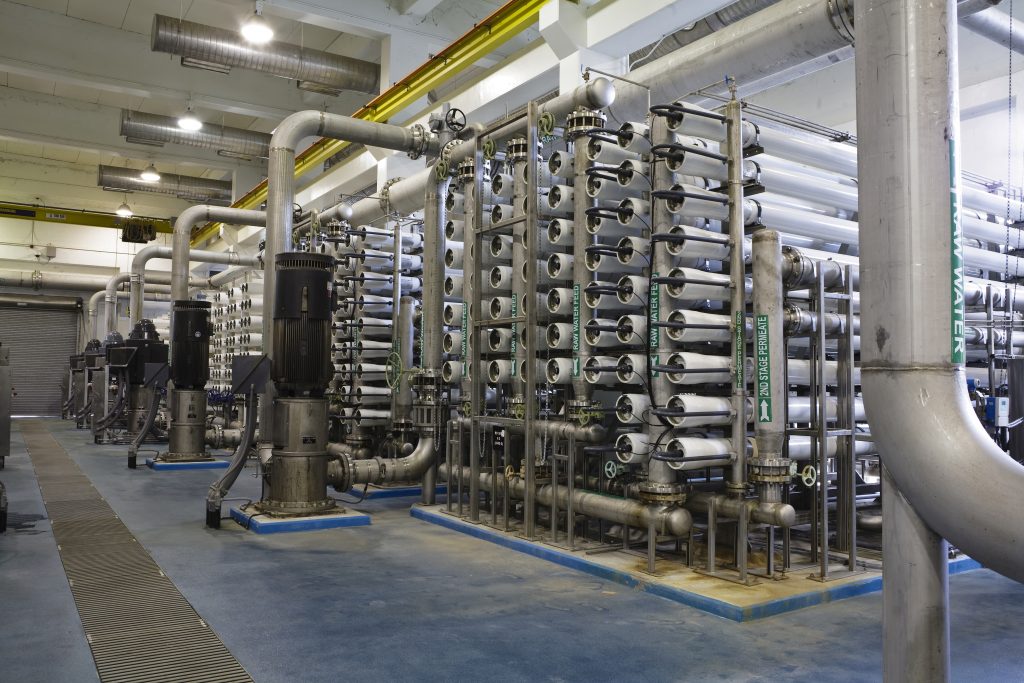
Garratt-Callahan (G-C), a century-old water quality management firm, provided the following paradox about water that relates to reverse osmosis systems.
Essential to the processes that drive industry, maintain communities, and protect public health, water is also a potent enemy of the systems that use it, the vessels that store it, and the pipes it flows through.
Our most abundant and valuable resource can be detrimental to the very systems that purify it, contain it, and ultimately distribute it to our homes and businesses. Given this, ensuring water is safe for use involves more than just treating it with chemicals to control bacteria and remove contaminants. Instead, reverse osmosis is a process that requires:
- Regular monitoring
- EPA-certified testing to assess water purity and system flow
- A reverse osmosis system (RO) configured for your specific needs
- Pre-treatment applications using appropriate combinations of the right chemicals
- Maintenance plans that include cleaning reverse osmosis units in place (CIP) as needed, or as determined by KPI monitoring
Ensuring good water quality also involves the use of analytical tools to forecast and prevent RO flow decline. For example, this is crucial for manufacturing plants that heavily rely on water to keep equipment cool and help avoid operational outages. Lack of adequate cooling water can lead to hundreds of thousands of dollars in equipment losses as well as lost production time due to frequent CIP shutdowns. A properly managed RO system is central to mitigating these costs and minimizing operational downtime.
RO units actively pass pure water through a membrane to remove contaminants. More than 98 percent of ions, plus viruses, bacteria, and solids are removed with RO, along with material smaller than .001 microns. This results in a highly purified “permeate” water stream and a smaller, concentrated waste stream.
Customized Reverse Osmosis Solutions
Allowing experts to develop an RO strategy that fits your company’s overall needs.

With their own ISO-certified lab and proprietary chemical formulas, G-C has RO down to a science. They apply an experimental approach to water purity analysis, comparing before and after pre-treatment measurements to ensure the chemicals are yielding the results they expect. They use data and advanced techniques to analyze and manage RO unit performance. Interactive tools with key performance indicators (KPIs) are integrated into their Health Dashboard, which also includes alarm notifications, critical calculations, data visualizations, and remote access. Together, their reporting and on-site service augment the daily system monitoring that is so key.
Even when RO has been implemented for your plant, the system often requires customization to suit your particular needs. Below are two case studies that exemplify this.
Case Study 1
A Midwest ethanol plant experienced high membrane pressure. A failure risked an operations outage of $200,000 per day. To avoid this, the plant shut down multiple times per month to perform a cleaning-in-place (CIP) procedure.
G-C Analysis: The team used their ISO-certified lab to analyze the membrane. They found “a consistent supply of iron reducing bacteria,” which persisted despite the use of chlorination. They also uncovered “a gooey bacterial growth forming on the membranes.”
G-C Solution: A 30-minute chlorine dioxide solution and a longer non-oxidizing biocide soak were applied during their biannual plant shutdowns. As a further preventive measure, a performance monitoring system was implemented for early notice of trends in pressure flow and other critical indicators. This allowed the plant to be proactive in scheduling its CIP procedures.
Result: The RO system’s original performance levels were restored and the length of time between CIPs nearly doubled. The measures extended the life of the membrane and saved the company thousands of dollars in equipment and lost production.
Case Study 2
A particle board manufacturer in the Northwest experienced clogging of its RO units every 2 – 3 days, risking boiler shutdown due to poor system flow. To avoid this, the manufacturer was performing frequent CIP, incurring significant operational outages.
G-C Analysis: After observing CIP procedures on-site at the plant, the team determined that the products being used to clean the RO units during CIP were ineffective.
G-C Solution: The team adjusted the CIP to use its proprietary products for removing biofouling, organic fouling, heavy metals, and inorganic scales. The RO units were then treated with a “continuous injection” of G-C’s antiscalant formula.
Result: The manufacturer ceased experiencing a degradation in system flow. Three months after implementation of the new procedures, there was no imminent requirement to schedule a CIP.
Reverse Osmosis Systems Summary
After investing millions of dollars in equipment, you need to rely on experts to help protect your investment by ensuring it operates efficiently. Experts who can do this have deep knowledge about the range of water contaminants and how to test for their existence in the water system. They have expertise in purification techniques, as well as chemicals and their interactions. Finally, they have data analysis skills and an understanding of the key performance indicators needed to track trends and to signal when problems are on the horizon.
Together, these allow experts to do more than just configure and install RO units for your plant. They also allow experts to develop an RO strategy that fits your company’s needs overall. This includes troubleshooting problems you might experience on any given day and providing you with the tools to monitor and manage your system on a regular basis.
Garratt-Callahan has been troubleshooting and improving reverse osmosis systems for over 30 years.
